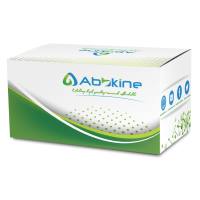Analysis of Protein Co‐Occupancy by Quantitative Sequential Chromatin Immunoprecipitation
互联网
- Abstract
- Table of Contents
- Materials
- Figures
- Literature Cited
Abstract
Sequential Chromatin Immunoprecipitation (SeqChIP) is a powerful technique for analyzing the simultaneous association of two different proteins with genomic DNA sequences in vivo. Cellular Protein?DNA complexes are cross?linked with formaldehyde (UNIT ), and are purified via two successive immunoprecipitations, with each immunoprecipitation targeting a different protein. Protein?DNA cross?links are then reversed and DNA sequences of interest are analyzed by quantitative PCR. At each genomic region, calculated SeqChIP co?occupancy values are compared to occupancy values of singly immunoprecipitated samples. The extent of enrichment brought about by the second immunoprecipitation relative to the singly immunoprecipitated sample is directly correlated with the degree of co?occupancy between the two proteins at the genomic location assayed. In principle, the technique is not limited to Saccharomyces cerevisiae . Cells from a wide variety of organisms can be used.
Keywords: chromatin; immunoprecipitation; protein-DNA interactions; in vivo crosslinking
Table of Contents
- Commentary
- Literature Cited
- Figures
Materials
Basic Protocol 1:
Materials
|
Figures
-

Figure 21.8.1 Schematic depiction of the three possible outcomes of a SeqChIP between proteins A and B: complete co‐occupancy (top left), no co‐occupancy (top right), and partial co‐occupancy (bottom panel). Partial co‐occupancy can be further subdivided into two categories: A is required (bottom left) or not required (bottom right) for the binding of B. View Image
Videos
Literature Cited
| Literature Cited | |
| Geisberg, J.V. and Struhl, K. 2004. Quantitative sequential chromatin immunoprecipitation, a method for analyzing co‐occupancy of proteins at genomic regions in vivo. Submitted. | |
| Ijpenberg, A., Tan, N.S., Gelman, L., Kersten, S., Seydoux, J., Xu, J., Metzger, D., Canaple, L., Chambon, P., Wahli, W., and Desvergne, B. 2004. In vivo activation of PPAR target genes by RXR homodimers. EMBO J. 23:2083‐2091. | |
| Kuras, L., Kosa, P., Mencia, M., and Struhl, K. 2000. TAF‐containing and TAF‐independent forms of transcriptionally active TBP in vivo. Science 288:1244‐1248. | |
| Li, X.‐Y., Bhaumik, S.R., and Green, M.R. 2000. Distinct classes of yeast promoters revealed by differential TAF recruitment. Science 288:1242‐1244. | |
| Metivier, R., Penot, G., Hubner, M.R., Reid, G., Brand, H., Kos, M., and Gannon, F. 2003. Estrogen receptor‐alpha directs ordered, cyclical, and combinatorial recruitment of cofactors on a natural target promoter. Cell 115:751‐763. | |
| Proft, M. and Struhl, K. 2002. Hog1 kinase converts the Sko1‐Cyc8‐Tup1 repressor complex into an activator that recruits SAGA and SWI/SNF in response to osmotic stress. Mol. Cell 9:1307‐1317. | |
| Soutoglou, E. and Talianidis, I. 2002. Coordination of PIC assembly and chromatin remodeling during differentiation‐induced gene activation. Science 295:1901‐1904. |









